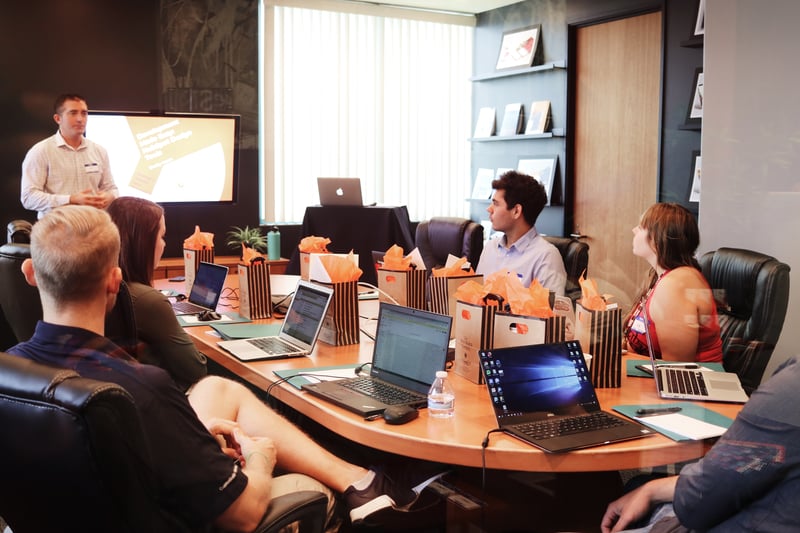Agile Insurance: 7 Simple Steps to Innovate
The insurtech revolution is here to stay. It feels like every day we’re learning about a new fundraising round, partnership, or company wide...

After prospecting for new clients, brokers consider the process of completing submissions and sending them to market the next most challenging aspect of their profession. More than two decades ago, the dawn of the internet promised the insurance industry speed and efficiency the likes we have never seen.
But it never happened.
Sure, brokers had to fax, mail, or even hand-deliver submissions to their carrier partners. Yet, today there is a case to be made that drafting submissions is far more cumbersome, tedious, and labor-intensive than before the days of the dot com bust.
Fortunately, the future we were promised has arrived. And it is spectacular!

Independent brokers have the benefit of accessing hundreds of insurance carriers and wholesalers. In addition, the ability to market accounts is a significant advantage that allows brokers to work on behalf of their clients. This is in contrast to captives searching for customers to match prospects up with an inventory of standard products.
But as rewarding as finding the right solution for customers is, doing so requires an inordinate amount of time and effort to solicit quotations from the marketplace. The slow submissions process decreases profitability for brokers and carriers while simultaneously reducing overall customer satisfaction.
The grind of today’s submission process can be boiled down to four sticking points.
Less risk-taking – It was not long ago that brokers could find a single carrier to place all lines of coverage. However, deeper insights into losses coupled with improved claims forecasting have resulted in carriers steering away from package policies and towards offering more mono-line coverages. As a result, brokers are now required to approach more markets to round out accounts.
Complex products – Insurance contracts are constantly changing coverage language by adding or removing terms, conditions, and endorsements. As a result, brokers today have more supplemental applications to complete and questions to answer than ever before.
Unknown appetites – Carriers have benefited from technology with the ability to quickly calculate trends and profitability across each vertical they insure. However, with dynamic data comes dynamic appetites. And while carriers work tirelessly to keep their broker partners informed, changes in appetite can occur at any moment.
Specialized products - New products are coming to market on a regular basis to meet the needs of the changing risks facing all types of businesses. For example, coverages previously offered by endorsements, such as cyber liability, terrorism, or legal defense gap, have become products of their own. This, of course, means more applications and information to collect by brokers.

When brokers sent submissions to carriers manually, the goal was to have their account “float to the top” of an underwriter’s work-in-progress file. This was accomplished by spending hours compiling data, completing forms, and presenting submissions in an easily digestible way.
As competition increases and more pressure is applied from new technologies, brokers search for the ideal submission solution. When speaking to brokers about potential solutions, we found four specific attributes to be the most desirable.
Building such a platform as described above may benefit only the broker. But as it turns out, carriers seek similar things from their technology solutions.

Technology has muddied the submission waters. As brokers piece together multiple technologies with their antiquated systems, carriers are stuck receiving submissions that have been patched together and lack cohesiveness. As such, missing information and a reliance on other carriers’ applications have become commonplace in today’s market submission process.
Soft markets exasperated this problem as carriers did not want to turn away new business opportunities. As the market hardened, changing broker habits has proved to be complicated. This has left the market in a transient state, waiting for technology to break the stalemate.
Technology has moved the needle with respect to claims handling. We know automation can reduce the cost of a claims journey by up to 30%. Yet, the metrics on technology’s impact on the submission and underwriting processes are just now coming to light. For technology to have a similar influence on submissions, carriers are increasingly adopting open data as a function of their business. This includes digitizing the entire submission process and enabling brokers to push data in a normalized format.
With carriers and brokers opening up their data, carriers now realize the power of being able to peer into a broker’s book of business. The value of such transparency allows carriers to “tag” broker accounts they are interested in, long before the expiration date arrives. As more carriers gain the same ability, competition for accounts will naturally increase, revealing the true winner of digital transformation – the client.

Entering data only once, peering into a broker’s book of business, and seeing submission statuses in real-time may sound fanciful. But it is already happening, and the results have been tremendous.
Recently, Highwing had the opportunity to onboard a regional broker suffering from a lack of speed and transparency within their marketing department. Our installation team trained their staff on a Wednesday, with positive outcomes appearing before the weekend.
Here is just a sample of how digital transformation is helping our newest client:
Many Markets, One Click – Assigned as the new broker of record, this new business opportunity included a 7-policy package that required heavy marketing. After entering all appropriate data (only once), the submission was sent to 15 markets with a single click. The average response time from underwriters was less than 8 hours.
Carrier Gains an Edge – The renewal of an information systems company caught the eye of a major insurance carrier who tagged the account before the effective date. With just a few clicks, the broker would submit multiple lines of coverage to the carrier in addition to other markets. The interested insurer won the business by having normalized data readily available and plenty of lead time to underwrite the business.
Simplified Submissions – The changing liability landscape of information technology organizations has always made renewals for IT companies challenging. With standardized submission templates available, the broker could easily submit this company’s renewal into the widening marketplace. In addition, conversations with underwriters were automatically logged into Highwing’s online portal, significantly reducing response time, and allowing the broker to actively manage the submission within the market.
Although it may have taken twenty years, the future of submissions has finally arrived. Brokers adopting digital transformation will free up much-needed time to pursue new business and forge stronger relationships with current clients. Carriers can now focus their time on the best opportunities while underwriting becomes streamlined with normalized data from their broker partners.
At Highwing, we continue to connect more carriers to more brokers. As our data model builds out, the quality of submissions and appetite data will make the submissions process even faster, more accurate, and potentially unrecognizable from how we know it today.

The insurtech revolution is here to stay. It feels like every day we’re learning about a new fundraising round, partnership, or company wide...

Next week, we are launching Zoom Into Insurance, a monthly video and podcast series where we bring together insurance professionals and innovation...

The insurance broker is facing a day of digital reckoning. Paper tigers stalk cubicles, manual processes drain energy, and the insatiable roar of the...